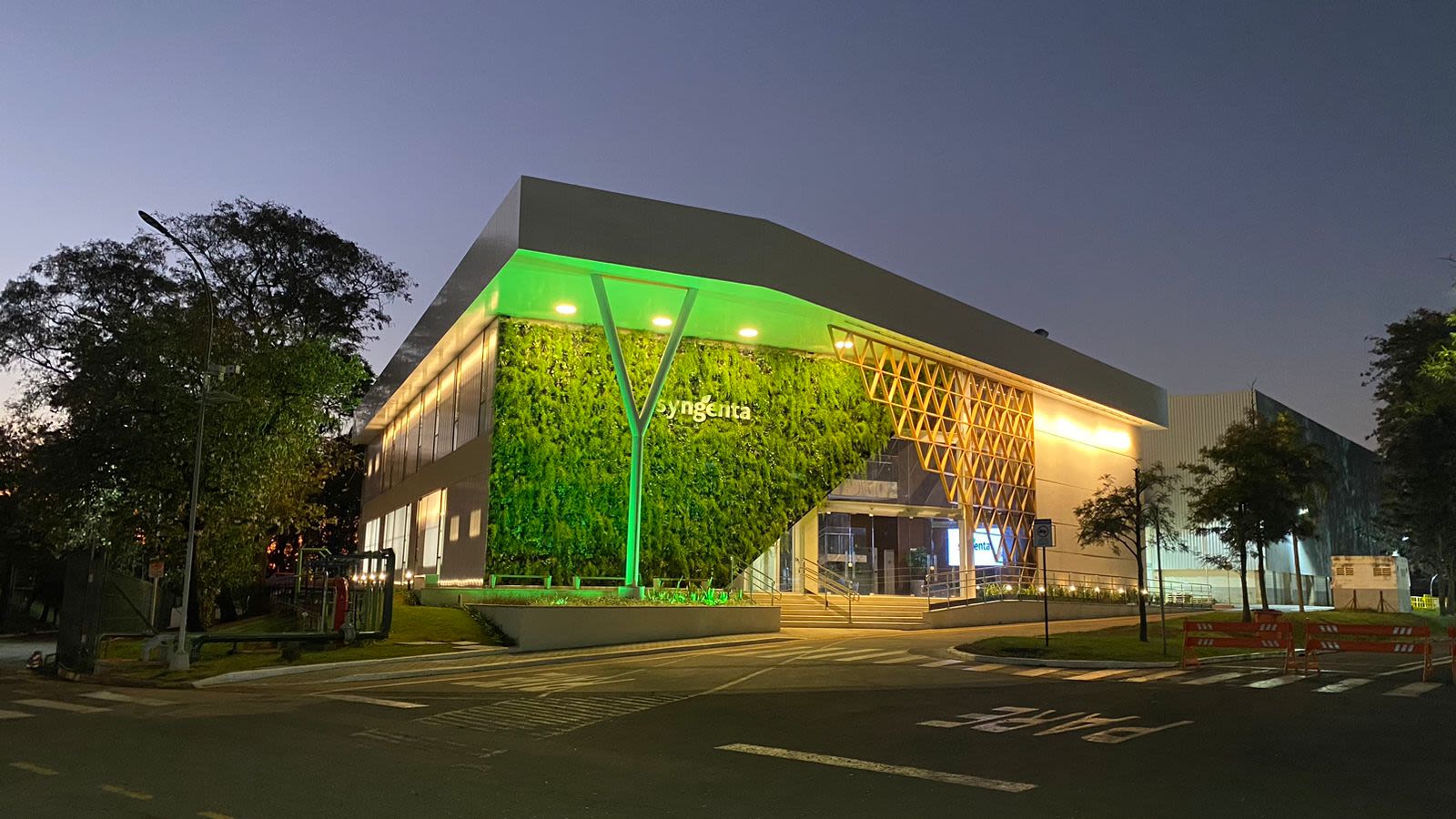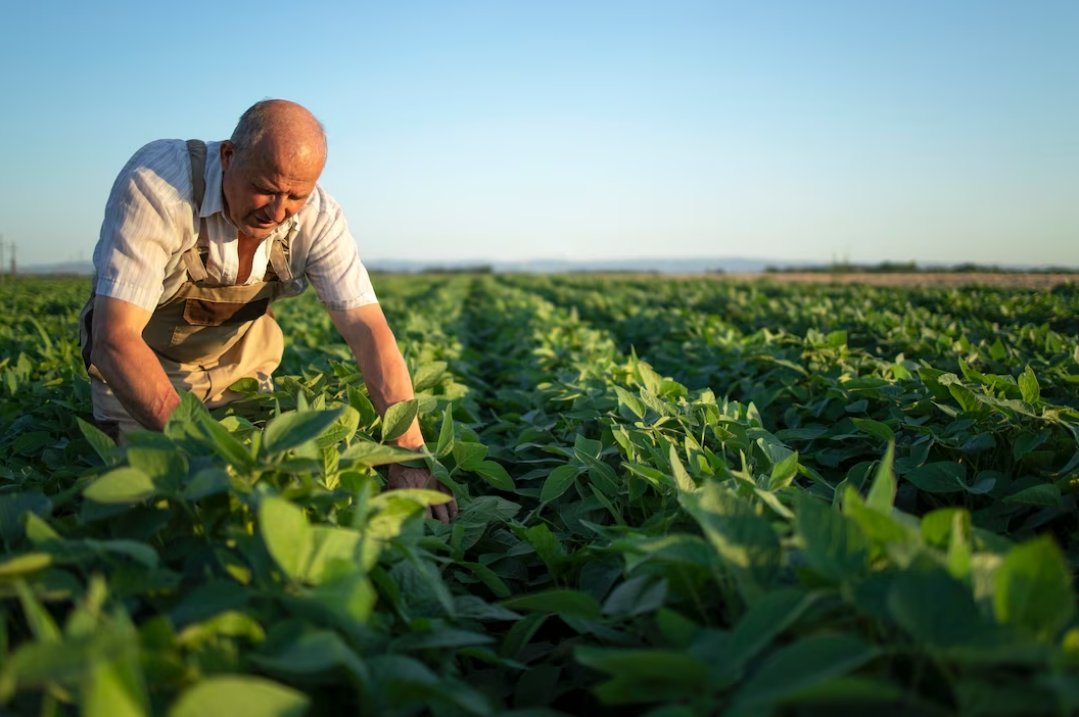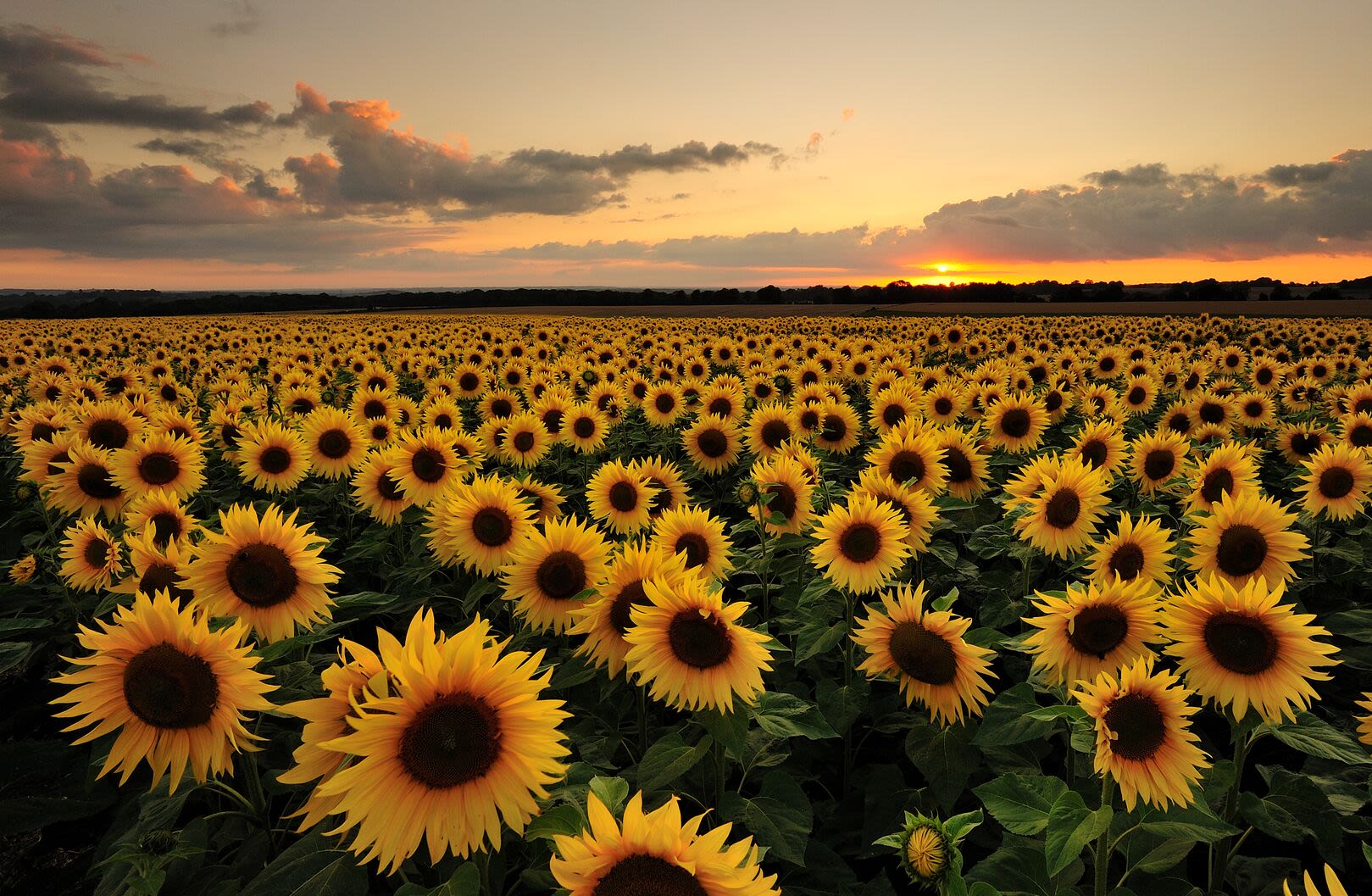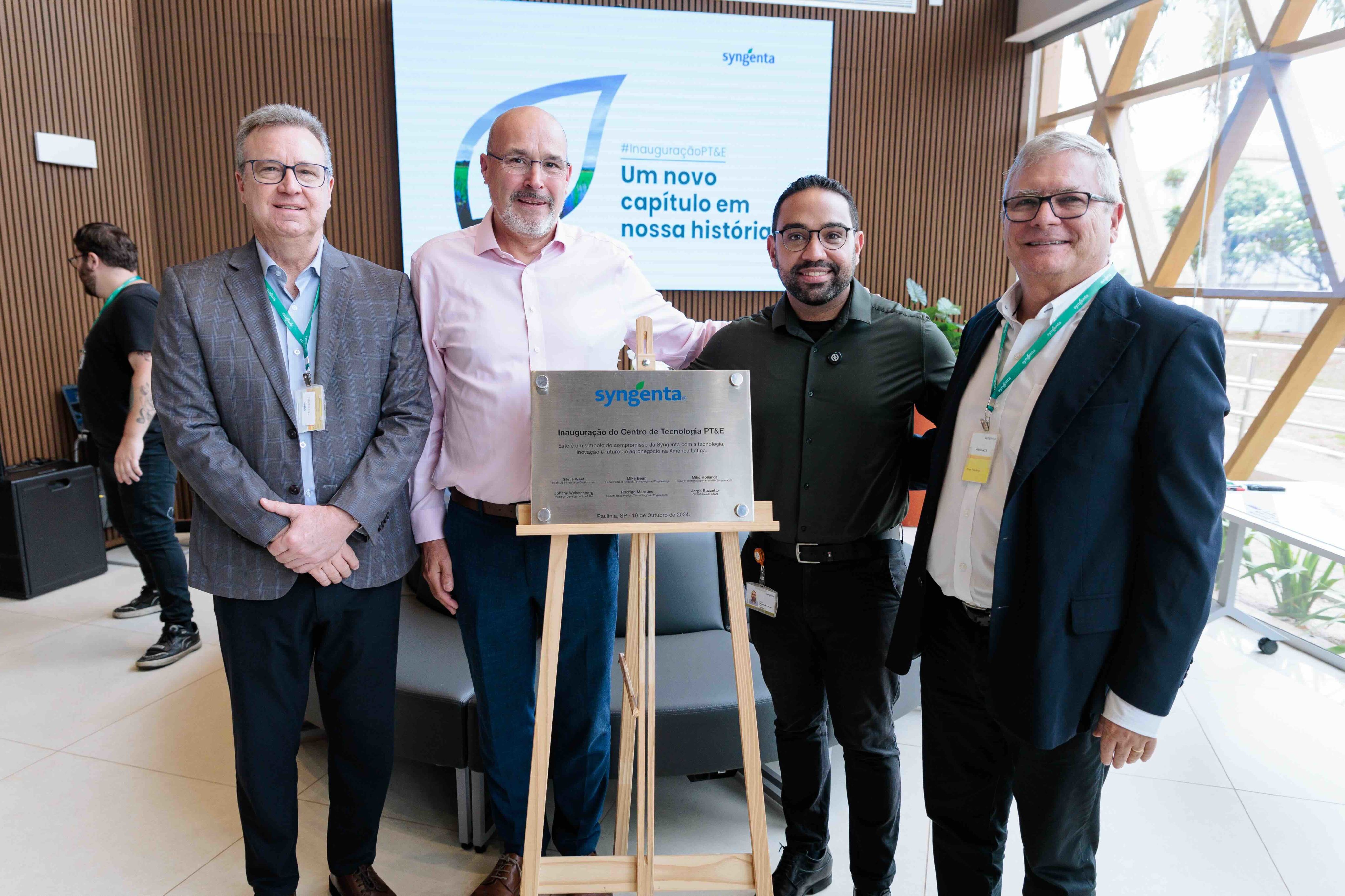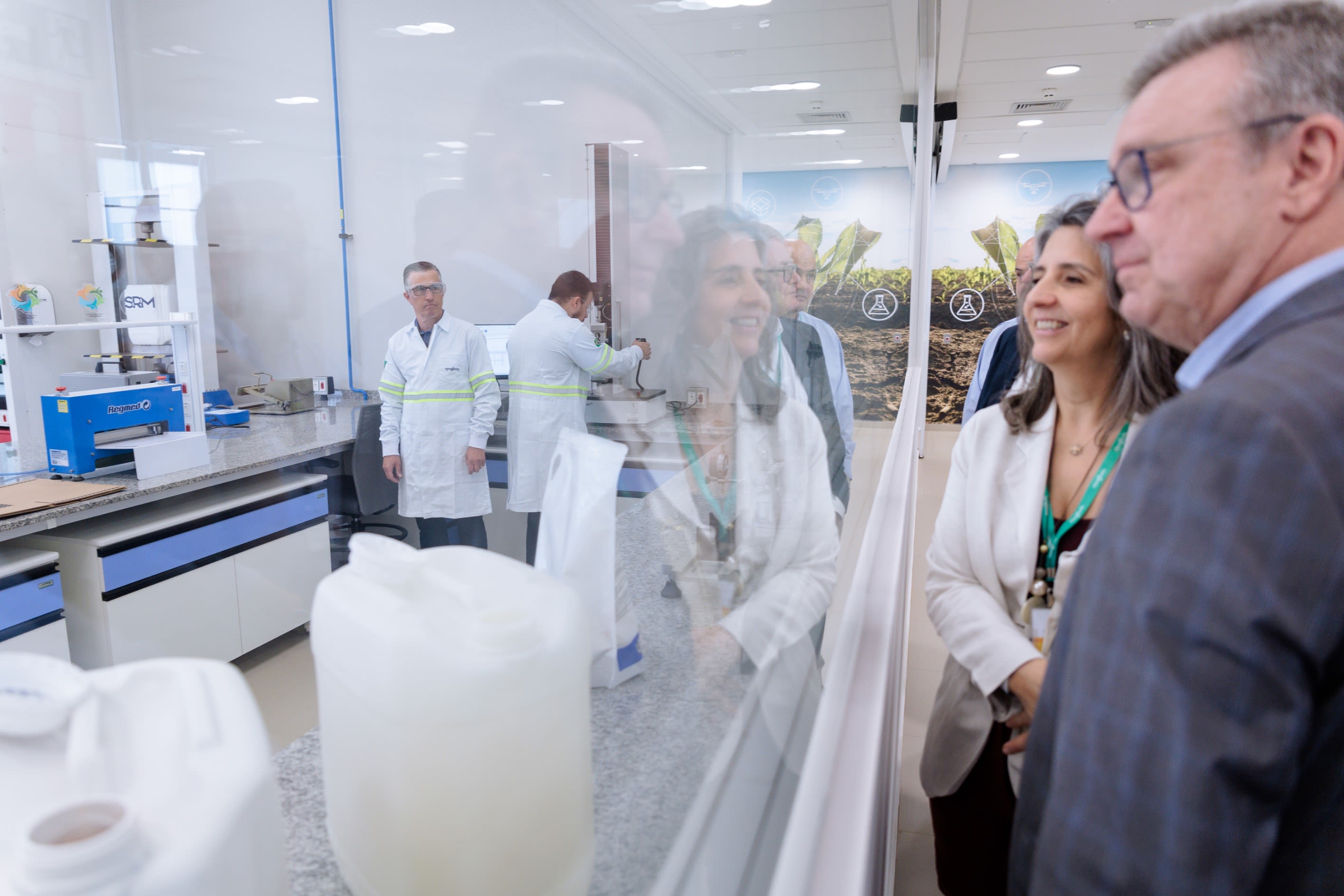Tropical climate, tropical solutions
How Syngenta is bringing tailored solutions to farmers quicker than ever.

It’s the result of more than five years’ work and $12 million of investment. Now, a new purpose-built complex in Paulínia, São Paulo, will translate cutting-edge science into pioneering technologies for the region’s farmers.
“Think of it as a ‘tropicalization laboratory’ and a powerhouse of innovation,” says Rodrigo Marques, Syngenta’s Head of Product Technology and Engineering for Latin America.
Opened in October, the Product, Technology and Engineering (PT&E) Center in Brazil will focus on developing tailored formulations for farmers across Latin America. Marques says: “Since starting the project, we’ve needed to strengthen our team which now includes chemists, biologists, agronomists and engineers.”
An agricultural powerhouse
Thanks to its temperate climate and vast tracts of prime agricultural land, around a quarter of Brazil’s GDP comes from farming. “Brazil has unique climate conditions that allows for up to three growing and harvesting seasons in the same year,” says Marques.
But this agricultural potential comes with huge challenges. Disease and destructive pests must be constantly managed, meaning that farmers across the country’s different regions urgently need tools to protect their precious harvests.
Marques explains: “High temperatures and high humidity equal higher pest pressure so integrated pest management is essential.”
In order to support farmers, scientists work hard to understand this complex ecosystem and translate what farmers need into effective solutions. They do this by creating precisely designed molecules that target threats to crops. But that is only half the story.
These molecules must then be formulated and packaged into usable products which can be put to work in the field.
Just as developing the molecule in the first place requires cutting-edge scientific expertise, so does the formulation process. The new center in Brazil allows scientific expertise to flourish.
One of the center's six new labs is dedicated to biological solutions, using naturally derived sources like bacteria or fungi as the basis of new ways of controlling pests and protecting crops.


Sustainability and connectivity
With Brazilian farmers keenly aware of the importance of sustainability, the new center was designed with this in mind. Awash in natural light, the building captures and reuses rainwater and is covered with solar panels to generate power.
Marques says that “our task was to create a building that brings together nature, science, collaboration, inclusion and sustainability in a single, unique structure”.
Marques adds that Brazilian farming has adopted the use of biologicals for pest management in a major way. However, without this new facility the only option is to import the materials from overseas. This drives up costs and causes delays.
“Localizing our development with tailored solutions makes all the difference,” says Marques.
Based near Syngenta’s existing manufacturing facilities and close to the important R&D field site in Holambra, the center connects with growers and is plugged into the global network of Syngenta R&D centers.
For Marques, this “local and global connection allows us to serve the best of Syngenta to the different customers' needs in Brazil and across Latin America”.

